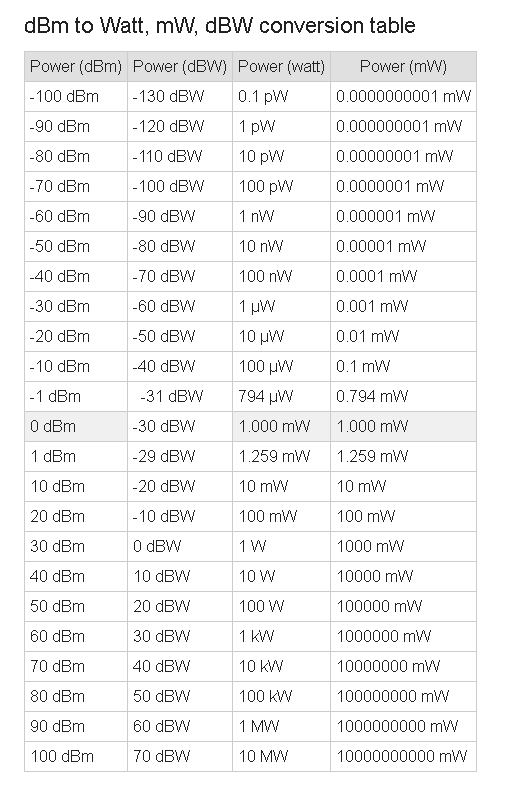 |
| Alexander Graham Bell, after which the bel, and therefore the decibel, is named. |
dB
The decibel (dB) is a dimensionless unit used for quantifying the power ratio between two values. The unit is useful for describing the gain or loss in a system. It is used when characterizing amplifiers, attenuators, mixers, or RF chains as a whole. It is based on the bel and is defined as follows:A power ratio is defined as:
power ratio = ouput_power / input_power
A bel is defined as:
power in bels = log10(output_power / input_power)
A decibel is 1/10 as large as a bel so ten decibels make up one bel:
1 bel = 10 decibels
And therefore power in decibels is defined as:
power in decibels = 10 * log10(output_power / input_power)
The table below shows the loss/gain as a power ratio compared to the loss/gain in decibels for several different values:
The table below shows a amplitude ratio, power ratio (which is just the amplitude ratio squared), and associated dB value. Note that the dB range for corresponding power ratios is much smaller, i.e, -100 dB to +100 dB corresponds to 0.0000000001 to 10000000000 power range. That makes the use of dBs desirable when dealing with large power ranges. An example would be a satellite communications system where transmit antenna signal power is +14 dBW and receiver antenna signal power is -160 dBW.
As you can be seen from the table above, 1 dB is approximately 26% power gain, 3 dB is approximately 2× power gain, and 10 dB is 10× power gain. This is useful to know for "back of the envelope" power calculations.
dBW
dBW is an abbreviation for the power ratio in dB of the measured power referenced to one watt (1000 mW):
power in dBW = 10 * log10((output_power_watts) / 1W)
For 1mW of power, you get -30 dBW.
For 2mW of power, you get -27 dBW.
For 1W of power, you get 0 dBW.
dBm
dBm, also written as dBmW, is an abbreviation for the power ratio in decibels (dB) of the measured power referenced to one milliwatt (mW):power in dBm = 10 * log10((output power in watts)/1mW) = 10 * log10((output power in watts) / 0.001)
For 1mW power, you get 0 dBm.
For 2mW power, you get about 3 dBm.
For 1W power, you get 30 dBm.
So doubling the power is equivalent to about a 3 dBm increase.
dBm to dBW Conversion
We know the following:power in dBW = 10 * log10(output power in watts/ 1W) = 10 * log10(output power in watts)
and
power in dBm = 10 * log10(output power in watts/ 1mw) =
10 * log10(output power in watts / 0.001) =
10 * log10(output power in watts * 1/1000)
So we need to divide the dBW power ratio by 1000 to equate it to the dBm power ratio. But we know that 10 * log10(1/1000) is -30 dB.
And since we know:
log10(X * Y * Z) = log10(X) + log10(Y) + log10(Z)
we can just subtract 30 dB from the dBm value instead of dividing the power ratio by 1000 to arrive at the dBW value.
So for example, 50 dBm - 30 dB = 20 dBW.
Both dBm and dBW are used for measuring absolute power.
Below is a table showing the relationships between dBm, W, mW, and dBW.
References
https://en.wikipedia.org/wiki/DBmhttps://en.wikipedia.org/wiki/Decibel_watt
https://en.wikipedia.org/wiki/Decibel
http://www.allaboutcircuits.com/textbook/semiconductors/chpt-1/decibels/


